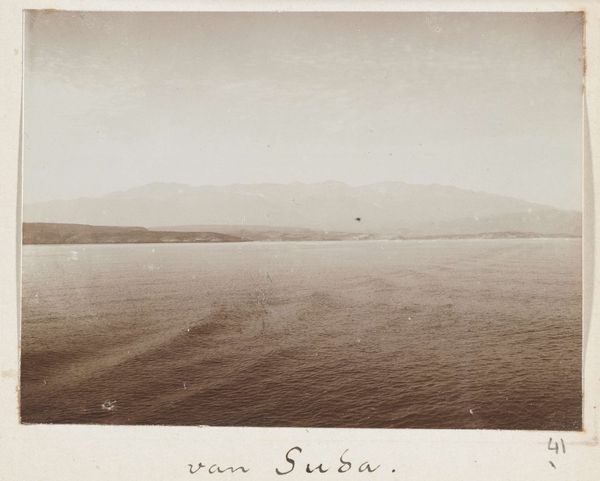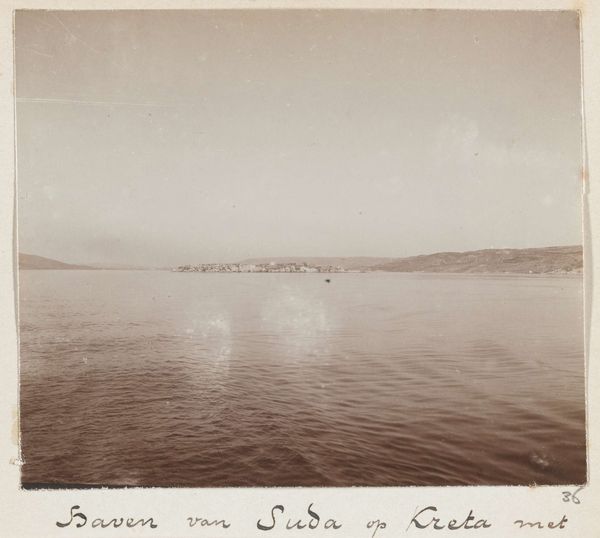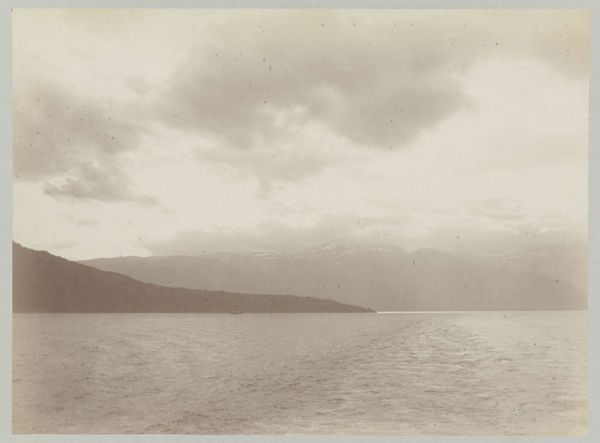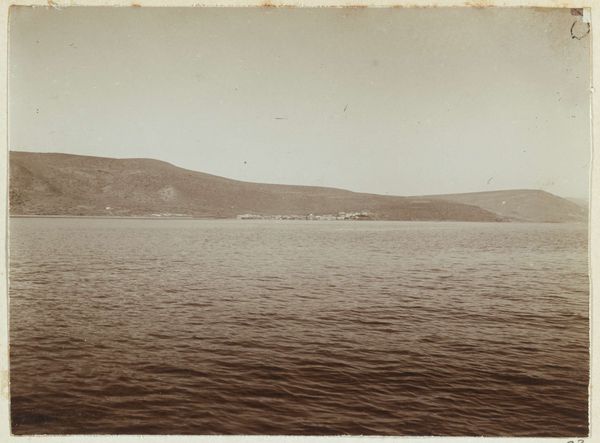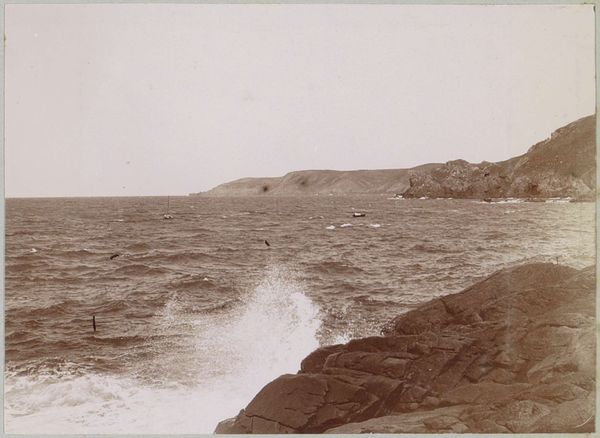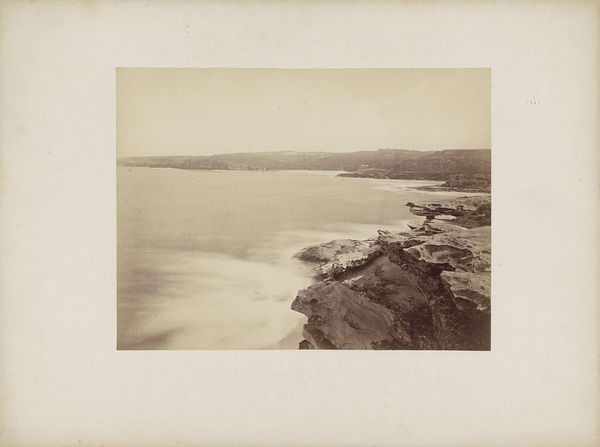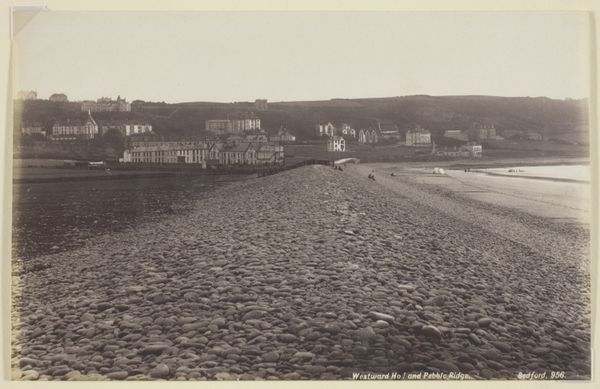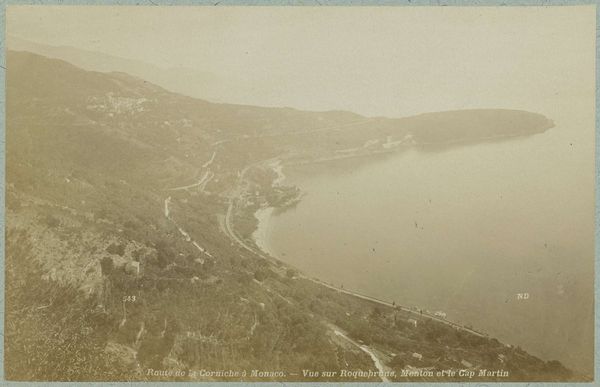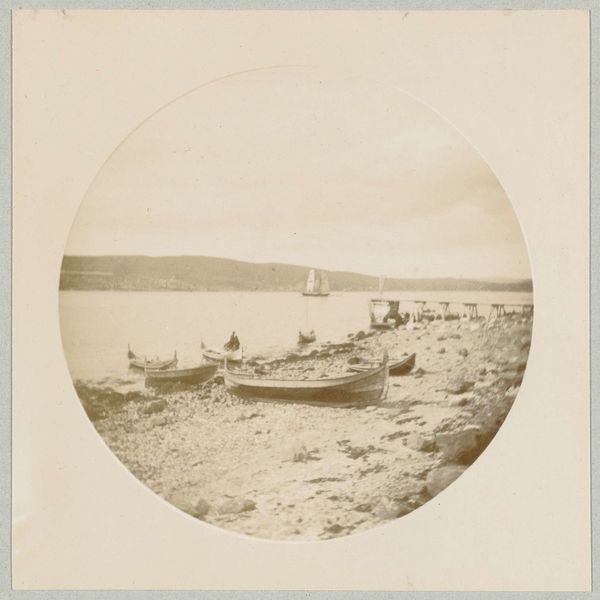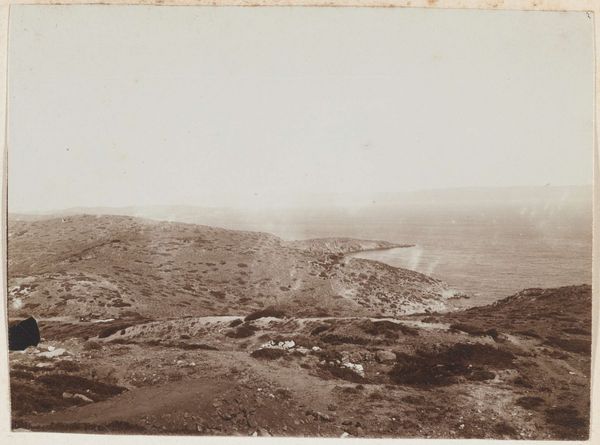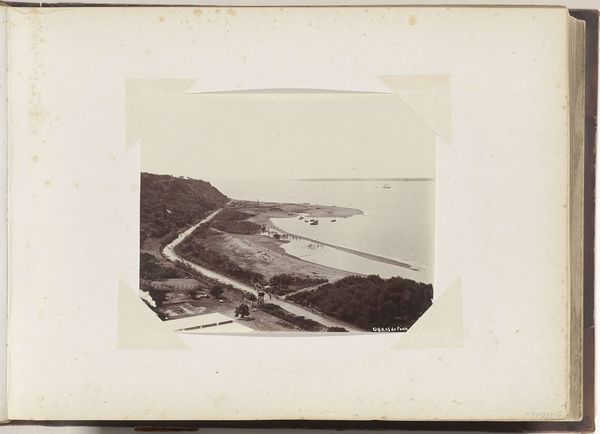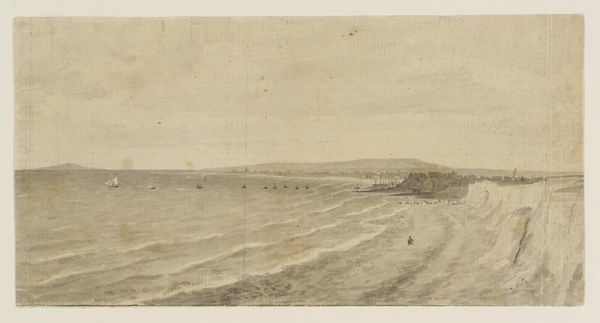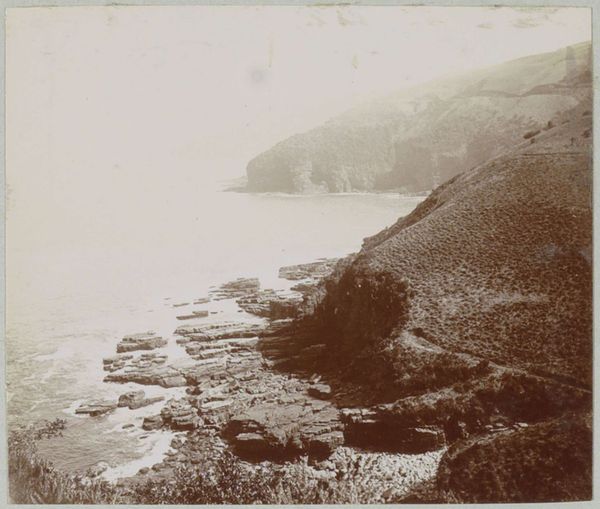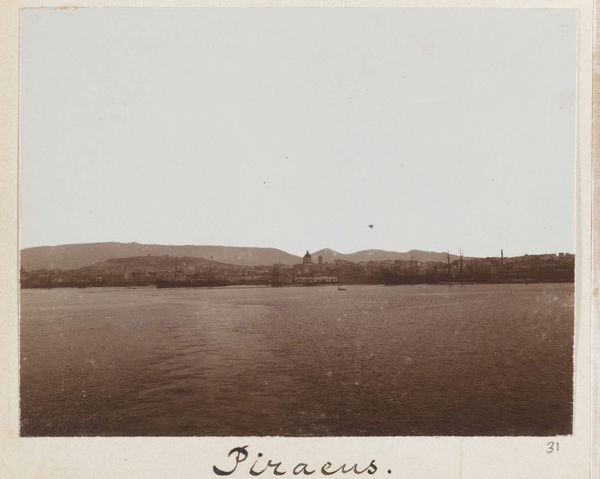
Dimensions: height 81 mm, width 109 mm
Copyright: Rijks Museum: Open Domain
Editor: This gelatin-silver print, "Gezicht op de Dode Zee" or "View of the Dead Sea", was taken by Johannes Lodewijk Heldring in 1898. The composition is striking; a long, straight shoreline divides the grainy earth from the subtly textured water, leading to a hazy horizon. What can you tell me about its historical context? Curator: Well, this image captures more than just a landscape. Consider the historical and political implications of photographing the Dead Sea in 1898. This was a period of burgeoning tourism to the region, but also increasing colonial interest. Was Heldring simply documenting the landscape, or was there a more profound statement about claiming or understanding this place through photography? How might the image's realism contribute to its political weight? Editor: That’s fascinating! So the very act of photographing it could be interpreted as a form of engagement with colonial narratives? I guess I hadn't thought about that with landscape photography. Curator: Precisely. Think about who had access to this image, and what narratives it may have reinforced or challenged. The Dead Sea, with its biblical history and unique environment, held symbolic importance. By creating and circulating this image, Heldring was participating in a larger conversation about land, identity, and power. Editor: That makes me think about the role of photography in shaping public perception back then. This photo is pretty austere; what kind of "reality" was it meant to convey? Curator: Good question. Perhaps a reality that was simultaneously scientifically objective and spiritually evocative? This photo's apparent straightforwardness could mask deeper ideological intentions. Heldring could have carefully framed and exposed it in a way that would appeal to Europeans interested in archeology. It shows how social and cultural influences were shaping even seemingly neutral depictions of nature. Editor: I'll never look at old landscapes the same way again. It makes me wonder about the intent behind every image and the societal forces that shaped it. Curator: Exactly! And recognizing those forces helps us understand how photographs contribute to constructing historical narratives and how we interpret the image itself.
Comments
No comments
Be the first to comment and join the conversation on the ultimate creative platform.
